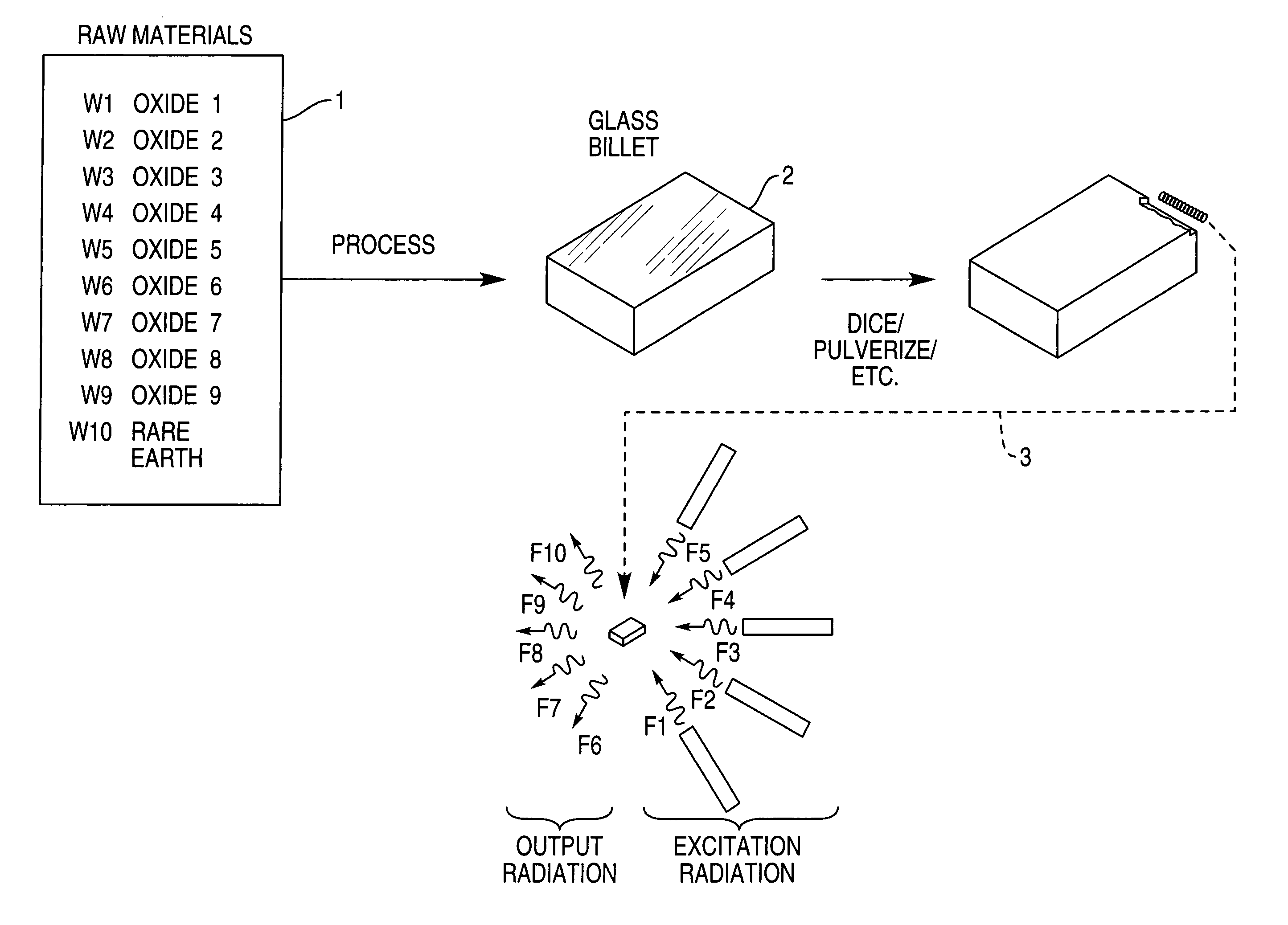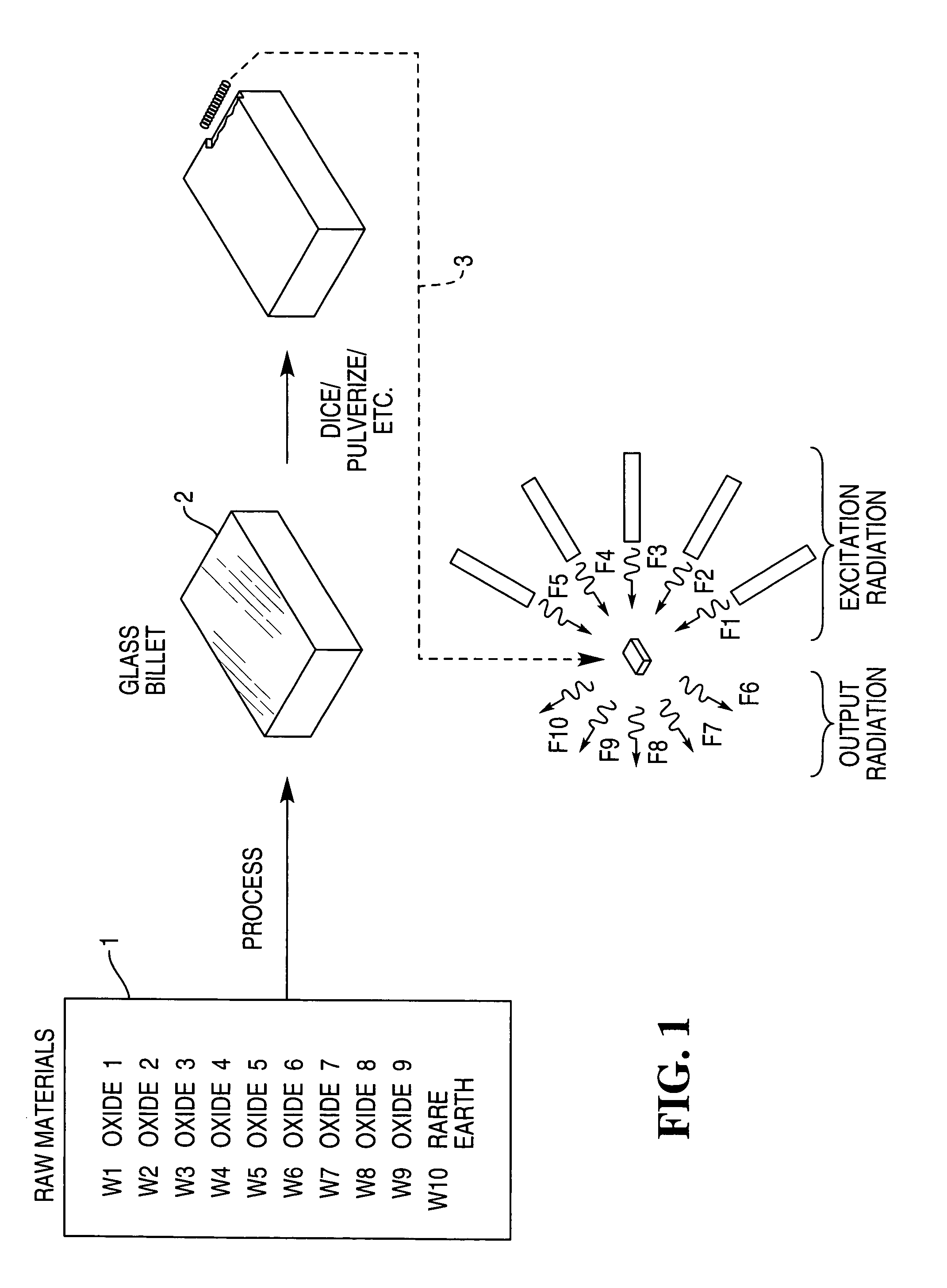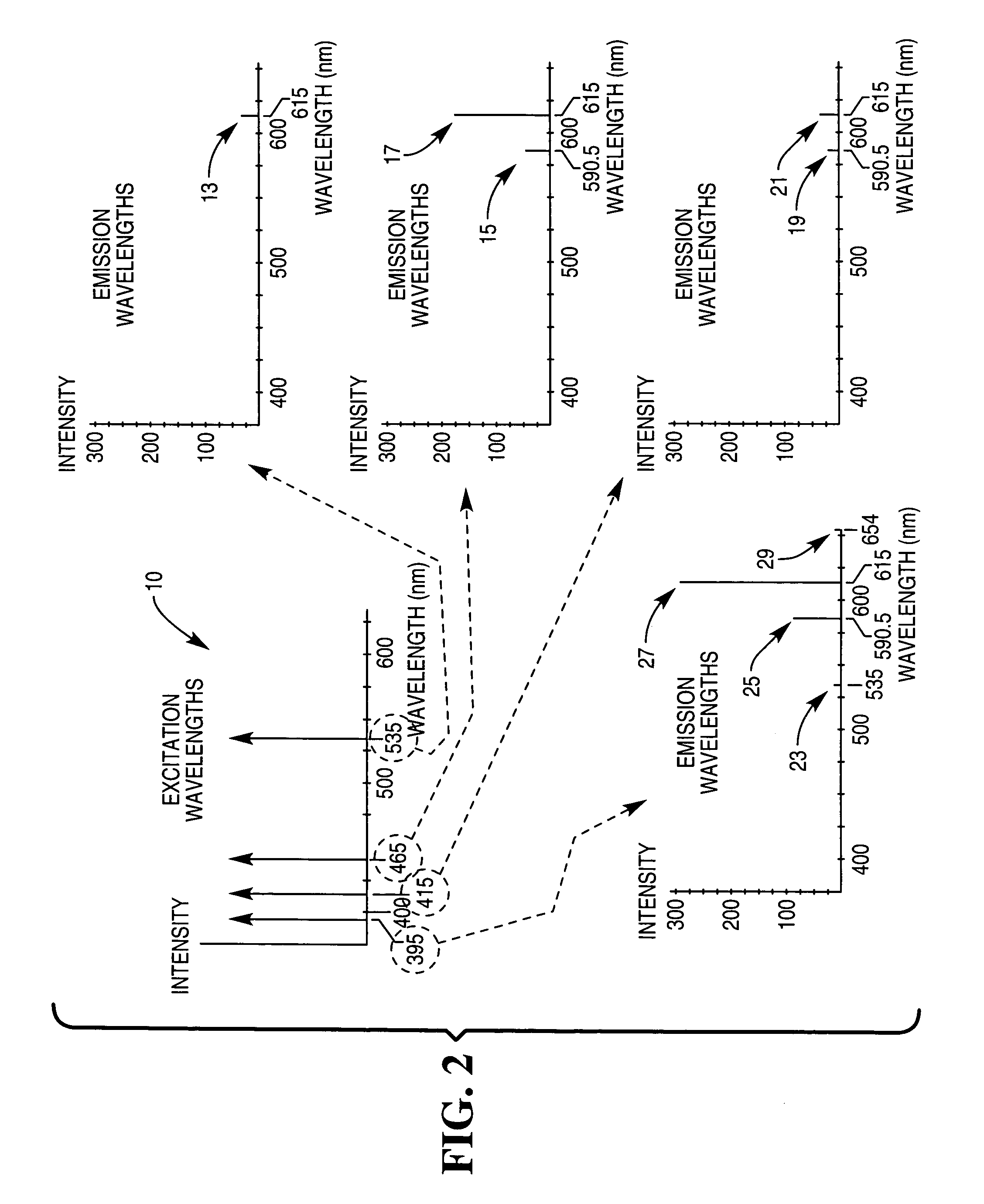Security labels which are difficult to counterfeit
a technology of security labels and counterfeiting, which is applied in the field of security labels which are difficult to counterfeit, can solve the problem that security markers are very difficult to replicate by counterfeiters
- Summary
- Abstract
- Description
- Claims
- Application Information
AI Technical Summary
Benefits of technology
Problems solved by technology
Method used
Image
Examples
Embodiment Construction
[0075] Block 1 in FIG. 1 illustrates a collection of two types of raw materials: (1) a group of oxides and (2) one or more rare earth elements. The labels W, such as W1, indicate that each raw material is present in a specific weight. Thus, the collective labels W1-W10 indicate a specific composition, by weight, of the raw materials.
[0076] The raw materials undergo heat treatment and possibly annealing, as indicated by the arrow labeled PROCESS, to produce a glass billet 2. The glass billet 2 is then cut into dice, or pulverized, as indicated by the arrow labeled DICE / PULVERIZE / etc.
[0077] Arrow 3 points to a block which represents one of the dice, or a collection of the powder. In the general case, when the block 3 is excited by radiation, indicated by frequencies F1 through F5, the block 3 will re-radiate specific frequencies, indicated by frequencies F6 through F10.
[0078] The specific re-radiated frequencies, and also properties of those re-radiated frequencies, are unique to t...
PUM
| Property | Measurement | Unit |
|---|---|---|
| Fraction | aaaaa | aaaaa |
| Length | aaaaa | aaaaa |
| Capacitance | aaaaa | aaaaa |
Abstract
Description
Claims
Application Information
 Login to View More
Login to View More - R&D
- Intellectual Property
- Life Sciences
- Materials
- Tech Scout
- Unparalleled Data Quality
- Higher Quality Content
- 60% Fewer Hallucinations
Browse by: Latest US Patents, China's latest patents, Technical Efficacy Thesaurus, Application Domain, Technology Topic, Popular Technical Reports.
© 2025 PatSnap. All rights reserved.Legal|Privacy policy|Modern Slavery Act Transparency Statement|Sitemap|About US| Contact US: help@patsnap.com



